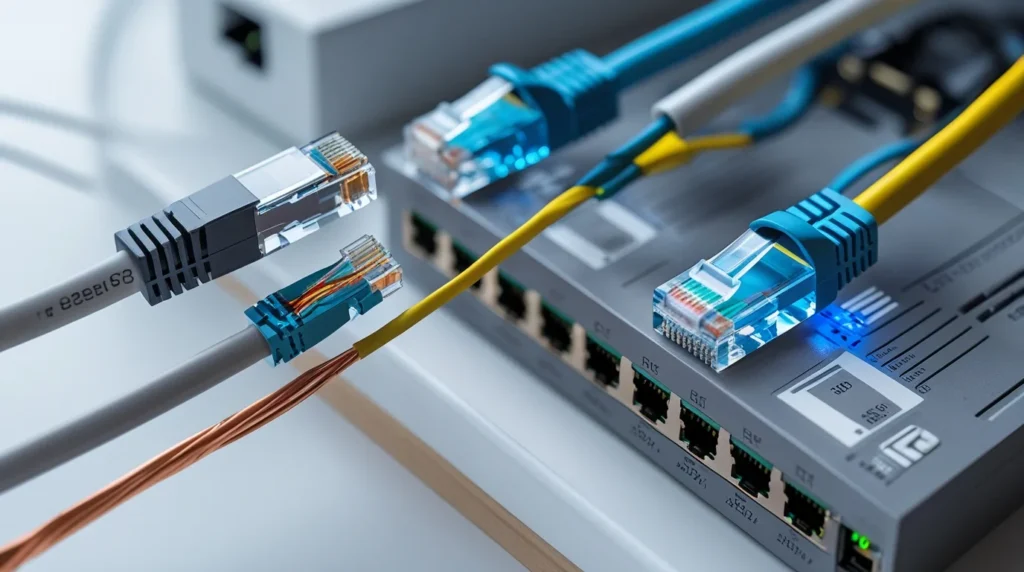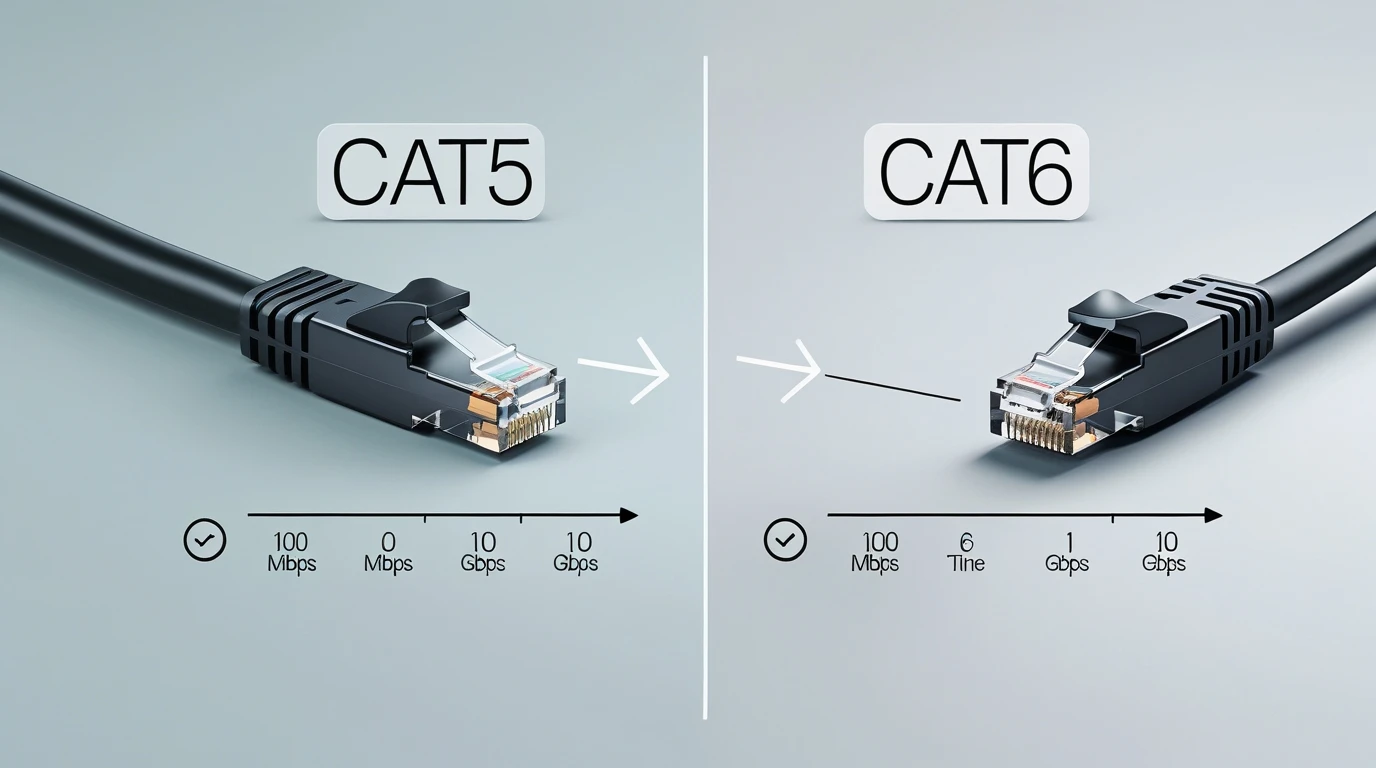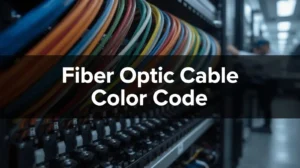Understanding Ethernet Cables in Everyday Networking
Ethernet cables are like the roads your internet travels on. They help send data from one device to another, from your computer to your modem or router. These cables are used in homes, schools, and businesses worldwide. Whether you’re watching videos, playing games, or working online, Ethernet cables make sure everything connects quickly and smoothly. One common question people ask is What is the difference between Cat5 and Cat6 cables. Understanding this can help you make better choices for your home or business network.
A Brief History of Ethernet Cable Categories
Ethernet cables have been around for many years. The first widely used version was Cat3, but it wasn’t very fast. Then came Cat5, which became popular for its ability to support faster internet. Cat5e followed with even better performance, reducing interference. After that, Cat6 cables were introduced. These offer higher speeds and less signal interference. All these cables use twisted pairs of copper wires to carry data. As more people began streaming videos and using smart devices, better cables were needed to handle the increased data. That’s why Cat6 became the go-to choice for many today.
What Is the Difference Between Cat5 and Cat6?
The main difference between Cat5 and Cat6 cables is speed and how well they handle interference. Cat5 cables are older and were designed for speeds up to 100 Mbps, while Cat6 cables can handle up to 10 Gbps over short distances. Cat6 cables also have tighter twists in their copper wires, which help block signal interference. This means Cat6 can transfer data faster and more reliably. Both cables look similar, but Cat6 performs better in environments with many connected devices or electronic noise. Knowing what is the difference between Cat5 and Cat6 can help you pick the right cable for your needs.

Cat5 vs Cat6: Speed, Bandwidth, and Performance
Speed is an important part of any internet connection. Cat5 cables offer speeds up to 100 Mbps and support up to 100 MHz of bandwidth. That’s okay for simple tasks like browsing the internet or checking email. Cat5e, an improved version, can go up to 1 Gbps. Cat6, on the other hand, supports speeds up to 10 Gbps and a bandwidth of 250 MHz. This is a big jump in performance. It means Cat6 can handle more data at once, which is great for streaming, gaming, or business use. If you want better network speeds and performance, Cat6 is the better choice.
Inside the Cable: Construction, Shielding, and Crosstalk
Cat5 and Cat6 cables are made of twisted pairs of copper wires. These twists help reduce crosstalk, which is when signals from one wire interfere with another. Cat6 cables have more twists and sometimes extra shielding. This added protection helps stop electromagnetic interference from nearby devices like microwaves or power lines. Cat5 cables usually don’t have this extra shielding. That’s why Cat6 gives more stable and clear data transfer. Shielding and tighter twists are the key features that help Cat6 work better in busy areas where many devices are used at once.

How Cable Length Affects Data Transmission
The length of a cable can affect how well it works. Both Cat5 and Cat6 cables are most effective up to 100 meters. But when you use Cat6 for high-speed data like 10 Gbps, the maximum length is only about 55 meters before performance drops. Signal degradation can happen over longer distances, especially with cheaper or older cables. If you need to cover long distances in your network, it’s important to plan carefully. Good quality cables and proper installation help reduce data loss and maintain fast speeds over longer runs.
Compatibility and Upgrading: Can Cat6 Work with Cat5 Devices?
Yes, Cat6 cables are backward compatible with Cat5 and Cat5e devices. This means you can plug a Cat6 cable into older equipment and it will still work. However, the speed will be limited to what the older device supports. For example, if your router only supports Cat5 speeds, upgrading to Cat6 won’t make it faster. Still, using Cat6 cables now can be a smart move if you plan to upgrade your devices later. It saves you from rewiring your whole network again. Cat6 works well with most current devices while preparing your system for future upgrades.

Use Cases: Which Cable Is Better for Your Needs?
Choosing between Cat5 and Cat6 depends on what you use the internet for. If you only check email, stream some videos, or browse websites, Cat5 or Cat5e is probably enough. But for video streaming in high definition, online gaming, or working from home, Cat6 is better. It offers faster speeds and stronger signals. In large places like data centers or offices with many devices, Cat6 helps avoid slowdowns and interference. For basic networking needs, Cat5 is fine. But for high-speed data transmission and better reliability, Cat6 is the preferred choice.
Price vs Performance: Is the Extra Cost Worth It?
Cat6 cables cost more than Cat5 cables. This is because they are made with better materials and provide higher performance. If you’re on a tight budget and just need simple internet, Cat5 might be enough. But for long-term value, Cat6 is worth the extra cost. It supports faster speeds, has better shielding, and works well in more demanding situations. The price difference may not be huge, and investing in Cat6 can save you money down the road if you upgrade your devices. Always consider your current needs and plans before choosing.

Choosing the Right Cable in Dallas, TX
- If you’re setting up a network in Dallas, TX, it’s important to choose a cable that fits your specific needs.
- The right cable ensures fast and reliable internet, whether for a home, office, or data center.
- Heritage Cabling offers high-quality Cat5 and Cat6 cables along with professional installation services.
- We help clients choose the right solution based on:
- Usage type (home, business, or commercial)
- Cable length requirements
- Environment (indoor, outdoor, high-interference areas)
- Budget constraints
- Usage type (home, business, or commercial)
- With increasing demand for high-performance internet, choosing the right cable is more important than ever.
- Let our local Dallas experts guide you with smart, cost-effective recommendations tailored to your needs.
Final Thoughts: Making an Informed Networking Decision
Cat5 and Cat6 cables both have their uses. Cat5 is good for light internet use, while Cat6 is great for faster speeds and more devices. The difference lies in how much data they can carry, how well they block interference, and how future-proof they are. If you want a network that can keep up with today’s fast internet and tomorrow’s needs, Cat6 is the better choice. Still, both types are widely used and work well for different needs. Think about what’s best for your home or business before making a final decision.
Need help deciding the right cable for your space? Heritage Cabling is here to help. Contact us today for expert advice and reliable service you can trust.




